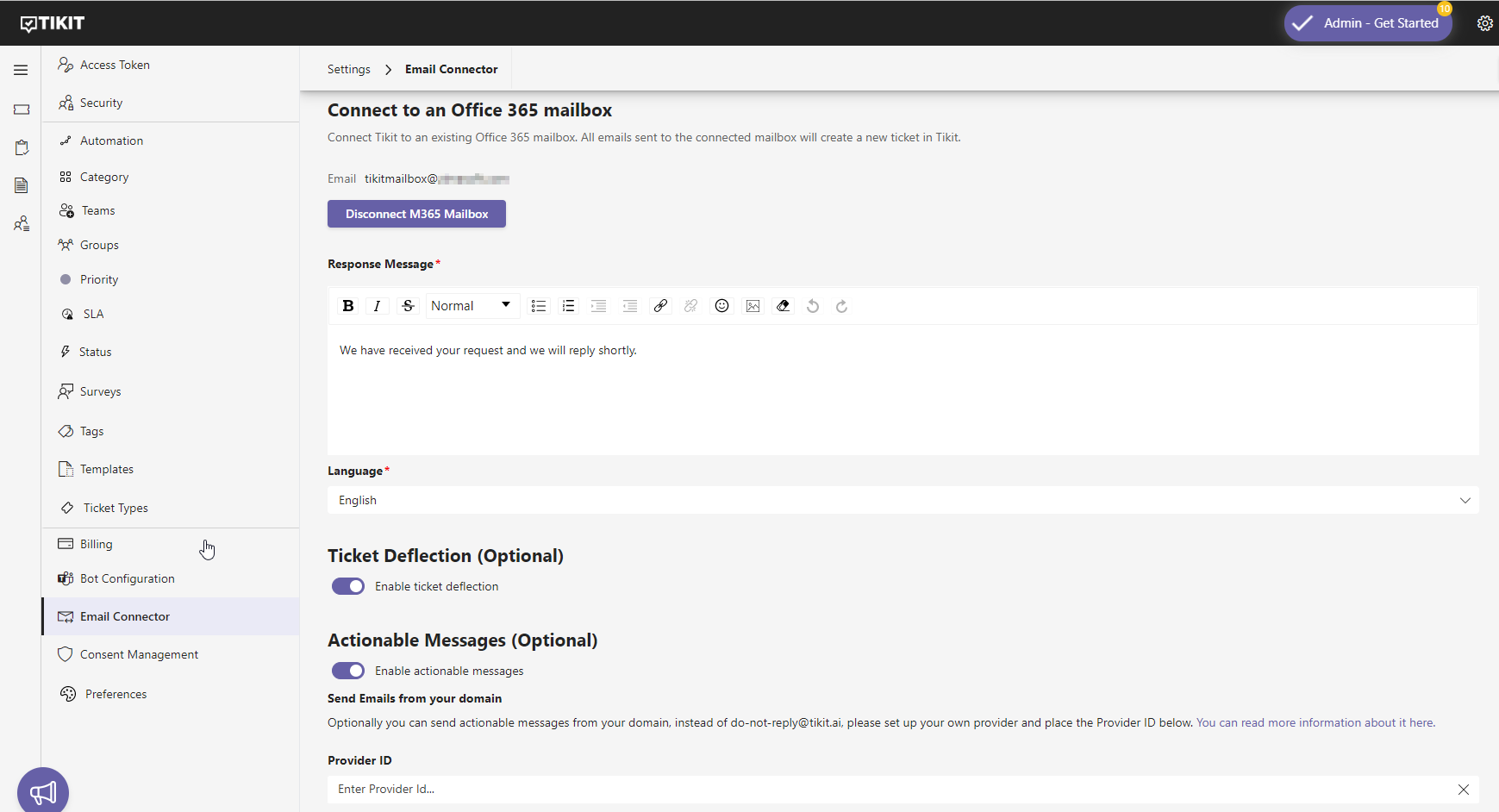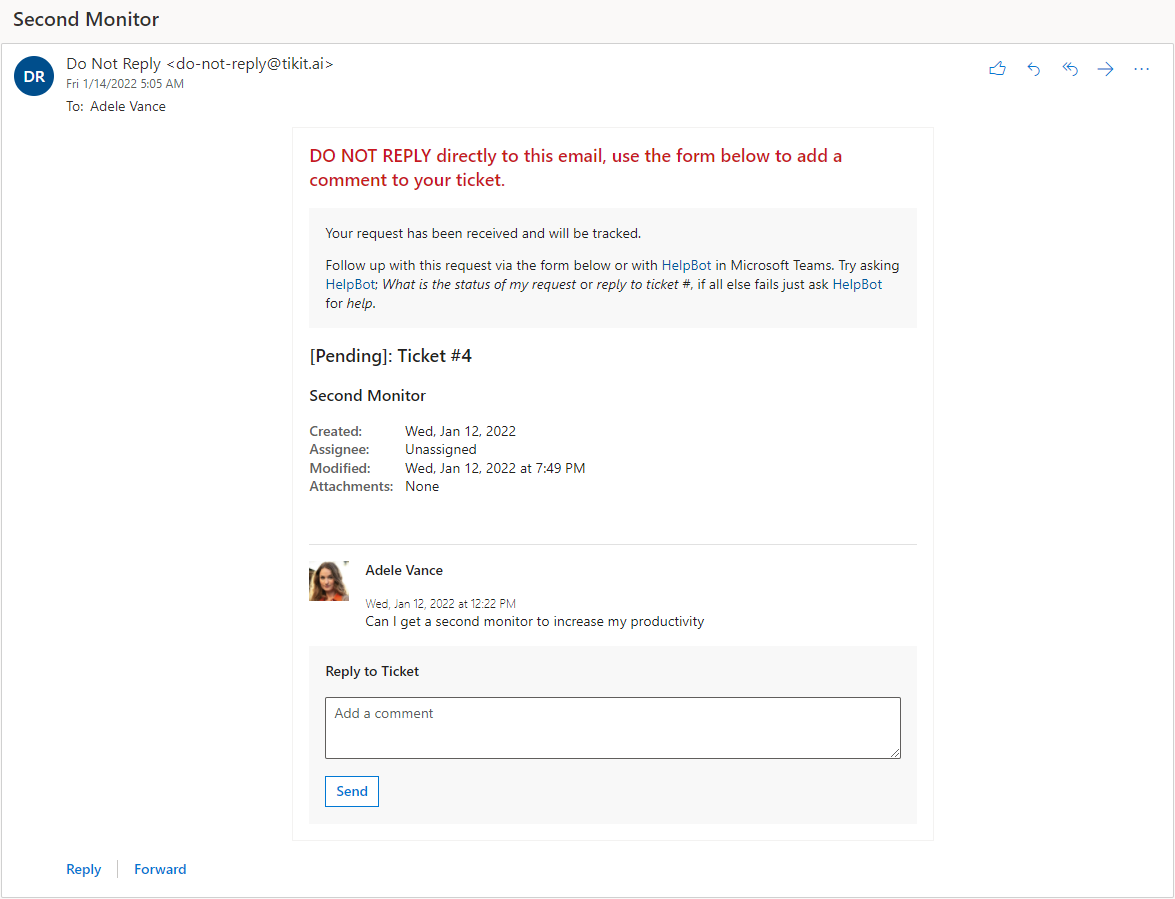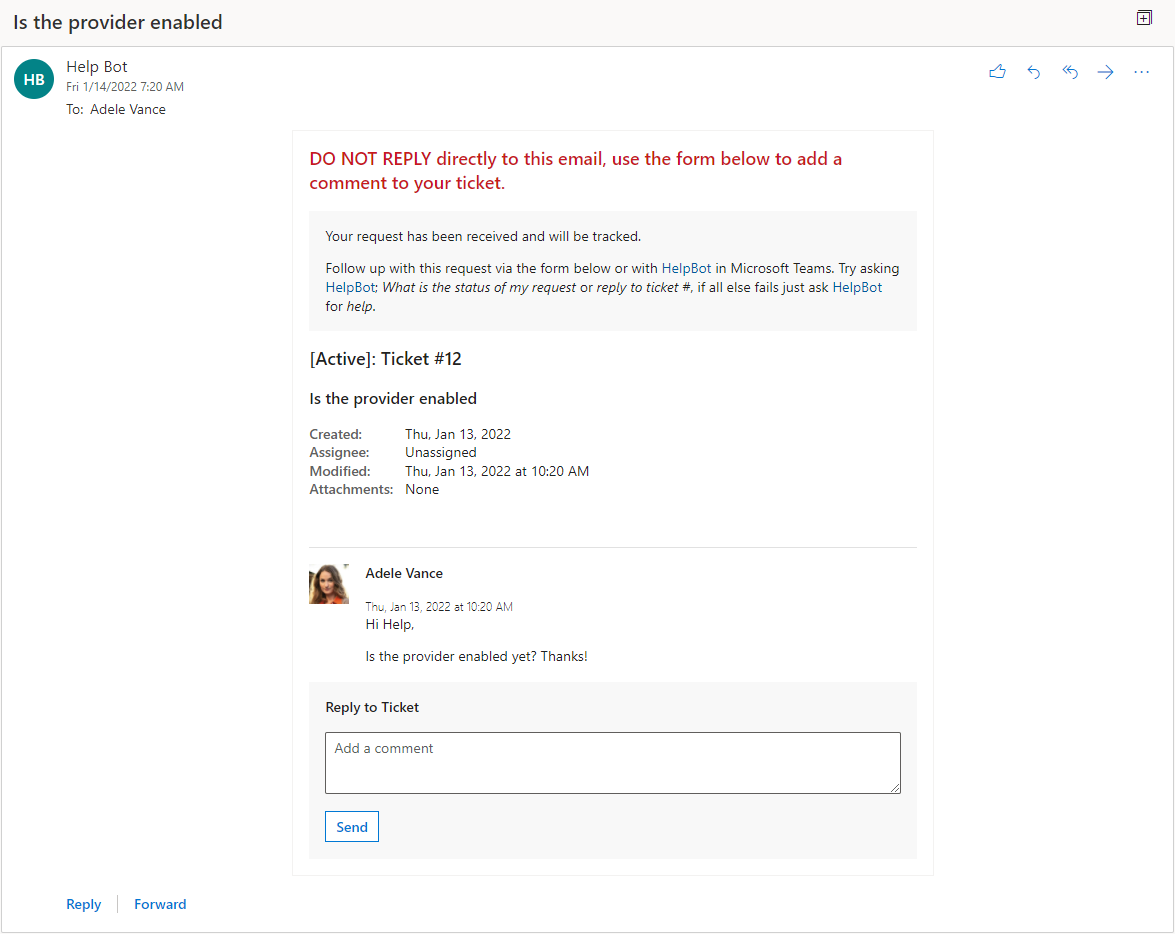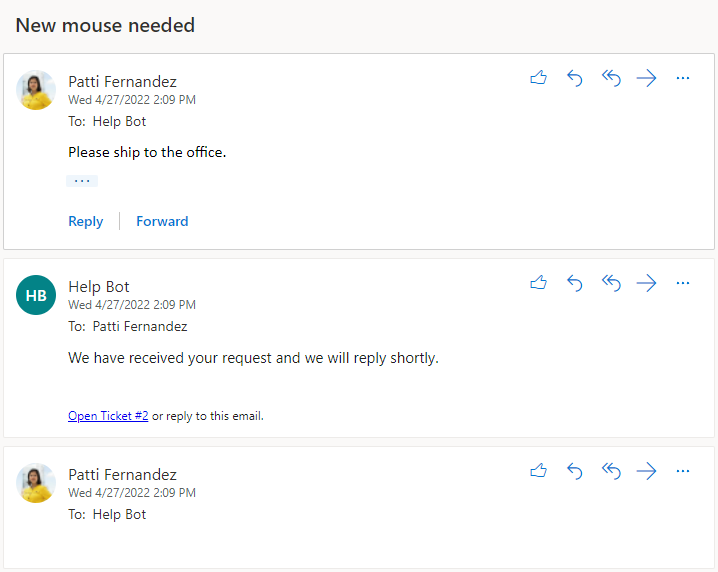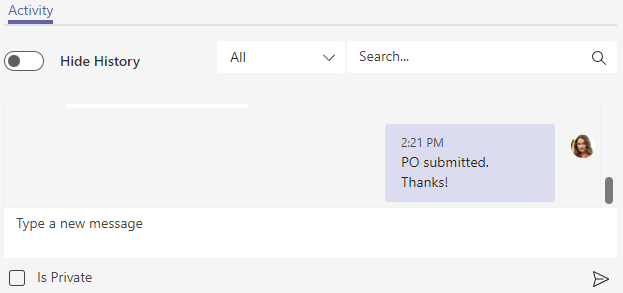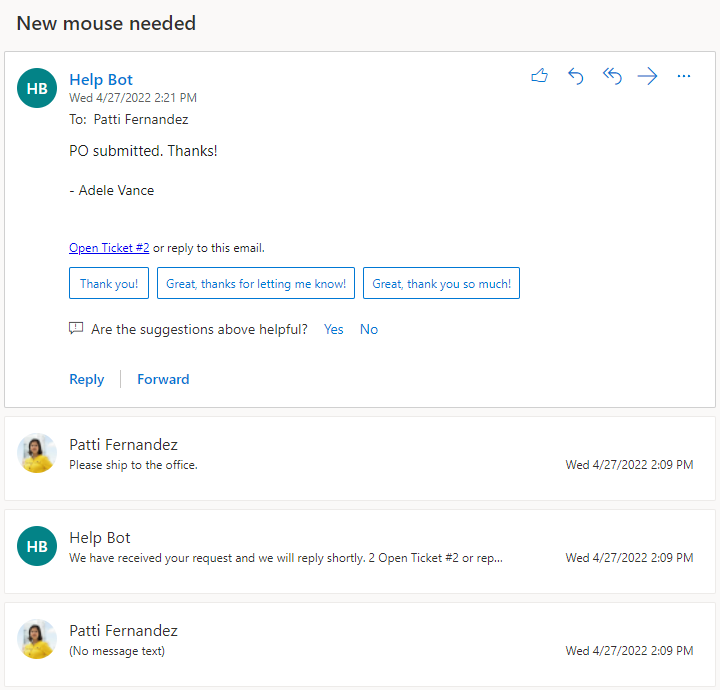Notification Center
To view and update the Notification Center settings in the Tikit web app:
- Open the Tikit web app at https://web.tikit.ai.
- Once in the Tikit web app, select the settings gear in the header, then select Notification Center.
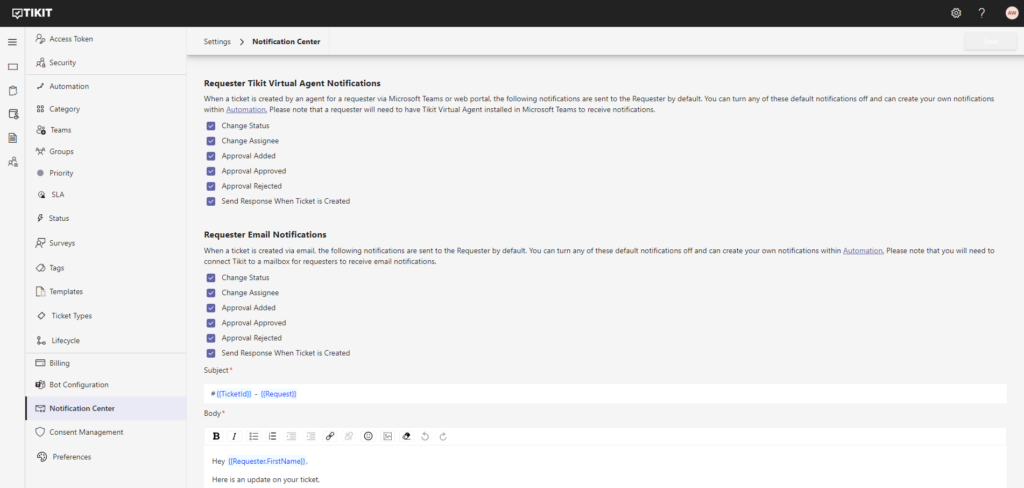
Below, you can find the list of all notifications that can be sent to a Requester by default when toggled on:
- Change Status: Whenever the status is changed on a ticket, the requester will receive a notification via the Virtual Agent / Email
- Change Assignee: Whenever the assignee is changed on a ticket, the requester will receive a notification via the Virtual Agent / Email
- Approval Added: Whenever an approval is added to a ticket, the requester will receive a notification via the Virtual Agent / Email
- Approval Approved: Whenever an approval is approved, the requester will receive a notification via the Virtual Agent / Email
- Approval Rejected: Whenever an approval is rejected, the requester will receive a notification via the Virtual Agent / Email
- Send Response When Ticket is Created: Whenever a ticket is created, the requester will receive a notification via the Virtual Agent / Email
Automations
You can create Automations “On an event” for Tasks and Lifecycles. You have the option to trigger your automation when a Task or Lifecycle has been Added, Modified, or both:
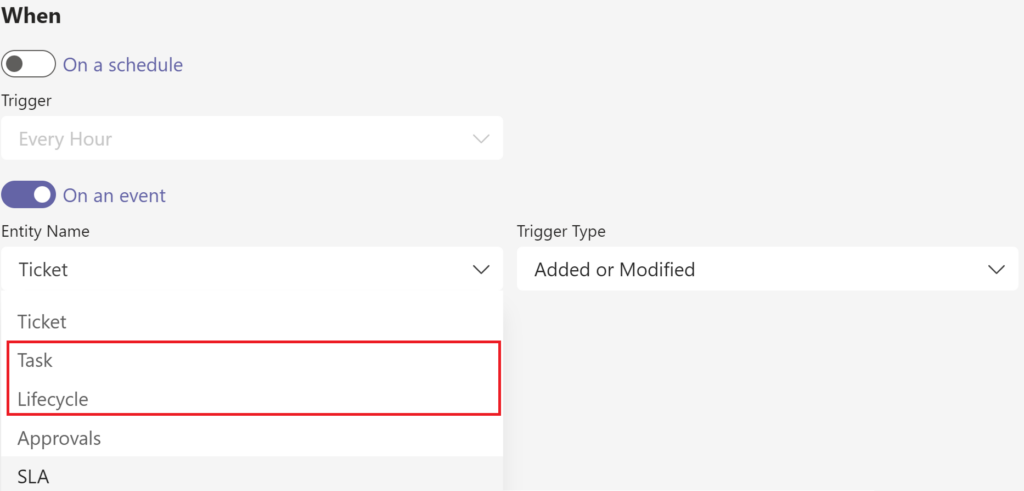
- Lifecycles: Trigger an Automation whenever a Lifecycle is added to a ticket using a template, when the Lifecycle is modified on the ticket, or in either scenario. You can also apply filters based on the following properties for Lifecycles:
- Status: Filter on if a Lifecycle status is Equal or Not Equal to a value, or if the Lifecycle status has changed
- Active Phase: Filter on the string name of the active phase, and if that value is Equal to, Contains, Starts with, or Ends with a given value
- Phase Name: Filter on any Lifecycle phase name, and if that value is Equal to, Contains, Starts with, or Ends with a given value
- Title: Filter on the title of a Lifecycle, and if the title is Equal to, or if the title is Null
- Tasks: Instead of filtering for the entire Lifecycle, you can filter for a specific task within a Lifecycle. Specifically, you can filter based on whether a task has been:
- Added: You can filter on if a task has been added to the ticket as part of a Lifecycle
- Modified: You can filter on if a task has been modified in any way as part of a Lifecycle
- Applied: You can filter on if a template has been applied to a ticket
- Changed: You can filter on if a template has been changed on a ticket; you can also filter on if a template was changed from one template to another, or changed to another template
Notification Variables
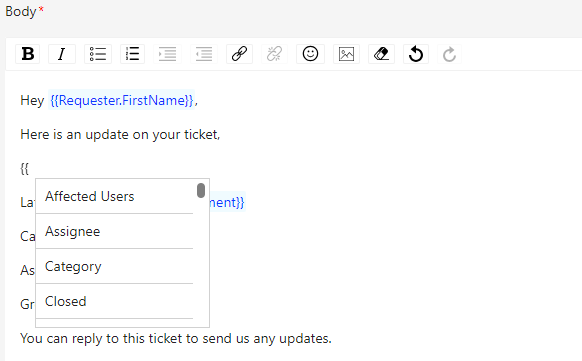
Variables are represented by a friendly name that differs slightly from the name presented in the dropdown menu. After typing “{{“, you’ll be able to scroll through that menu to select variables rather than having to type them all individually. Below you can find a list of all the variables included in the dropdown:
- AffectedUsers: The affected user(s) on a ticket
- Assignee: The assignee(s) on a ticket
- Category: The category a ticket belongs to
- Closed: A true or false value for the closed status of a ticket
- Collaborators: The collaborator(s) on a ticket
- CreatedDate: The date the ticket was created
- DueDate: The date (if assigned) the ticket is due to be completed
- IsMerged: A true or false value if the ticket has been merged with another ticket
- ModifiedDate: The date the ticket was last modified
- Priority: The numerical priority value of the ticket
- RelatedTickets: A list of the ticket numbers (if applicable) to the current ticket
- Requester: The requester(s) on a ticket
- ResolutionDate: The date the ticket is resolved
- Source: The source the ticket originated from
- Status: The status of the ticket
- Tags: The tags applied to the ticket
- Team: The team the ticket is assigned to
- TicketType: The type the ticket belongs to
- AgentURL: Returns the URL path to the ticket for agents (web.tikit.ai/tickets/###)
- Group: The group of the assignee on the ticket
- LatestComment: Returns the most recent comment on the ticket
- Request: Returns the request (title) of the ticket
- Requester.FirstName: Returns the first name of the requester
- Requester.LastName: Returns the last name of the requester
- RequesterURL: Returns the URL path to the request for end users (web.tikit.ai/requests/###)
- TemplateName: The name of the template applied to the ticket
- TicketID: The ticket number
Teams Notification Delivery Options
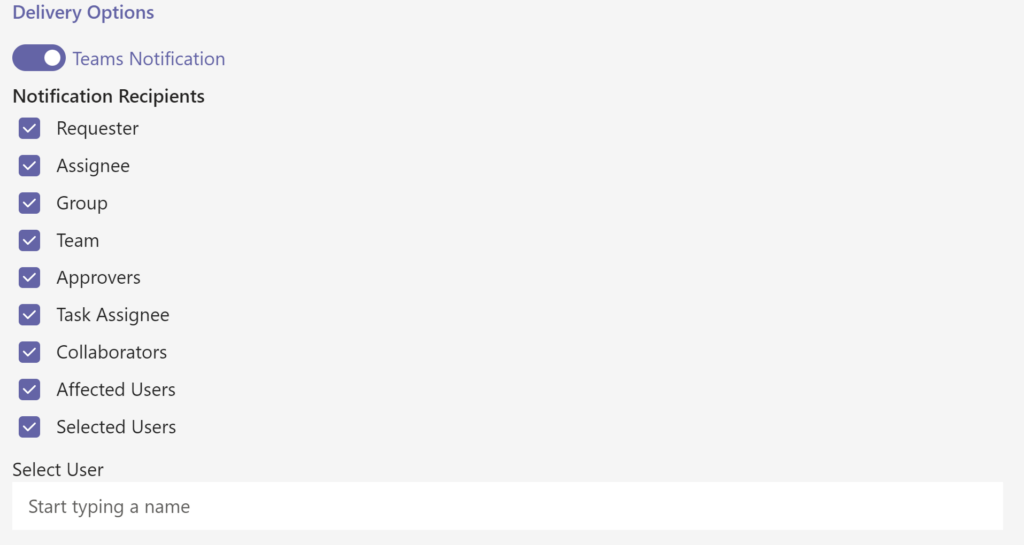
- Requesters: The Virtual Agent will notify the requester(s) on a ticket when the automation is triggered
- Assignee: The Tikit app will notify the assignee(s) on a ticket when the automation is triggered
- Group: The Tikit app will notify the group a ticket is a part of when the automation triggers
- Team: The Tikit app will notify the team a ticket is a part of when the automation triggers
- Approvers: The Virtual Agent will notify the approver(s) on a ticket when the automation triggers
- Task Assignee: The Tikit app will notify the task assignee(s) on a ticket when the automation triggers
- Collaborators: The Tikit app will notify the collaborator(s) on a ticket when the automation triggers
- Affected Users: The Virtual Agent will notify the affected user(s) on a ticket when the automation triggers
- Selected Users: The Virtual Agent will notify the specified user(s) on a ticket when the automation triggers
You can modify how the Tikit app and the Virtual Agent send notifications. As shown below, you can adjust these notifications individually:
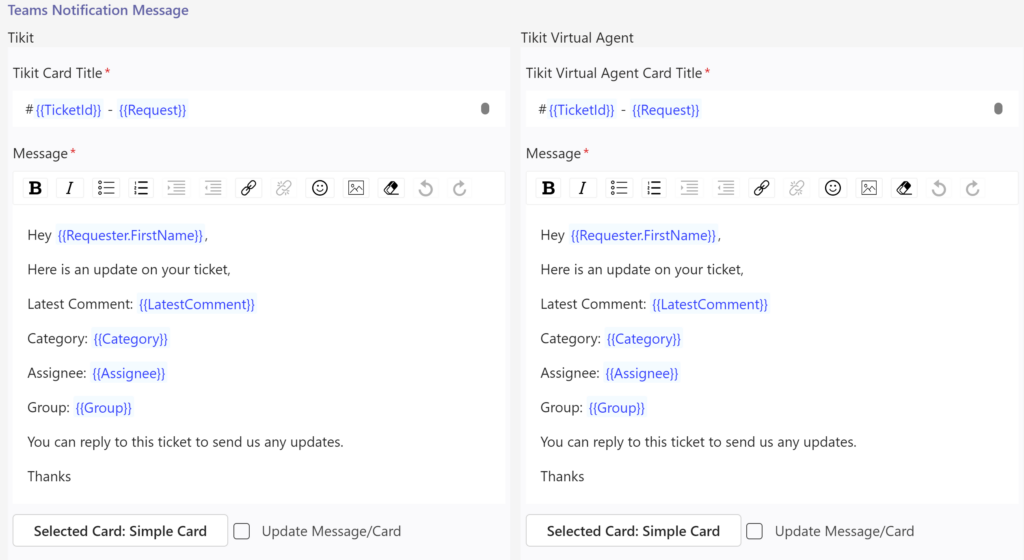
Below is an example of what the Teams notifications look like, including how variables with no value appear:
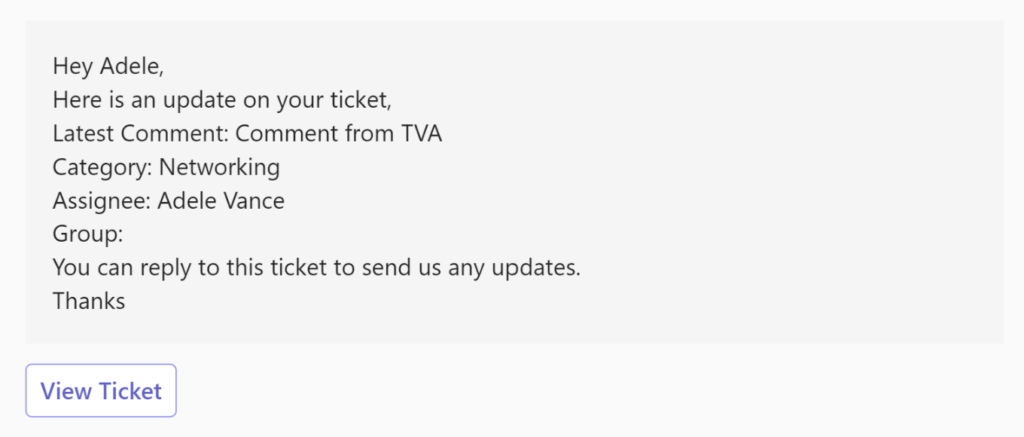
How to view Email Connector setting
Connect Tikit to an M365 mailbox. All emails sent to the connected mailbox will automatically open new tickets in Tikit. Note that connecting a shared mailbox is supported to avoid having to use an additional M365 license.
Connect each Team to a mailbox within the Teams section of Tikit. All emails sent to the connected mailbox will automatically open new tickets in Tikit. Note that connecting a shared mailbox is supported to avoid having to use an additional M365 license.
To view and update email connector settings in the Tikit web app:
- Open the Tikit web app at https://web.tikit.ai.
- Once in the Tikit web app, select the settings gear in the header, then select Teams.
The email connector will attempt to determine the sender’s language preferences based on the internet header of the message. If the connector cannot determine the language, the language specified in the Language option will be used as the default. This affects basic message properties including buttons, and actionable message cards.
Connect a mailbox
To connect an M365 Mailbox, see Connect an M365 Mailbox.
Note: The email connector sends notifications with a ticket number in the message subject using the format: #123. To reply to a ticket and create a comment on the ticket, the number must be included in the subject line of the email being sent.
Exclude Footer
Removes the link to the ticket in the portal from the bottom of the email message.
Deprecated: Actionable Messages has been deprecated in Tikit and will be removed in a future release of the application.
When a user submits a request via the email connector, Tikit responds with a customizable response message. Actionable messages takes this one step further by providing an immediate view of the user’s request to see ticket details, replies, and even add new replies without leaving Outlook.
To enable actionable messages:
Here’s an example of the response message with actionable messages enabled. Enter a comment in the Reply to Ticket field and select Send to add it.
Notice that the sender is Do Not Reply <do-not-reply@tikit.ai>. By default, actionable messages will be sent by do-not-reply@tikit.ai. If you’d like to change the sender email to one from your domain then you will need to create a Service Provider and enter the Id in the Provider ID field. Check out How do I send actionable messages from my domain instead of do-not-reply@tikit.ai? for more details.
Here’s an example of the response message with actionable messages enabled and a custom provider.
Notice that the sender is displayed as Help Bot and not the default do-not-reply@tikit.ai address. If you’d like to send actionable messages from your own domain too, check out How do I send actionable messages from my domain instead of do-not-reply@tikit.ai? for more details.
To add a reply to a ticket with the email connector:
Once on the edit ticket page, Patti’s reply can be seen in the activity feed. For more on details on using the ticket dashboard to view ticket activity, check out How to view ticket activity.
Requesters receive email updates for new ticket activity like new replies and status changes.
Here are a couple examples:
To disconnect an M365 mailbox, see Connect an M365 Mailbox.

